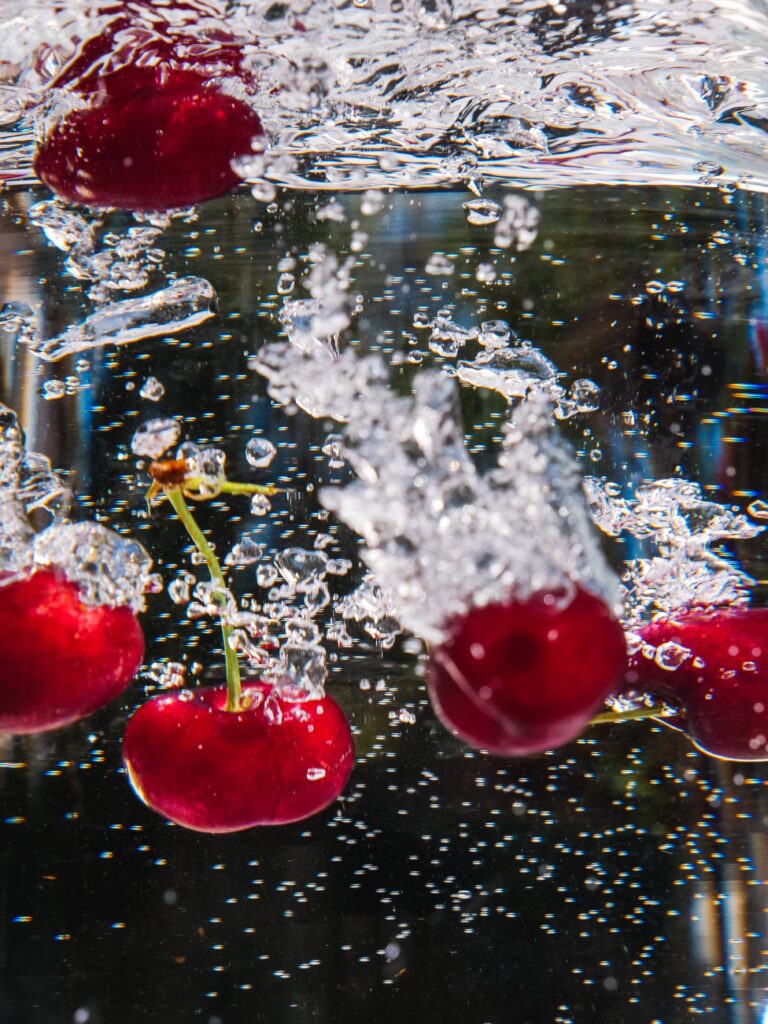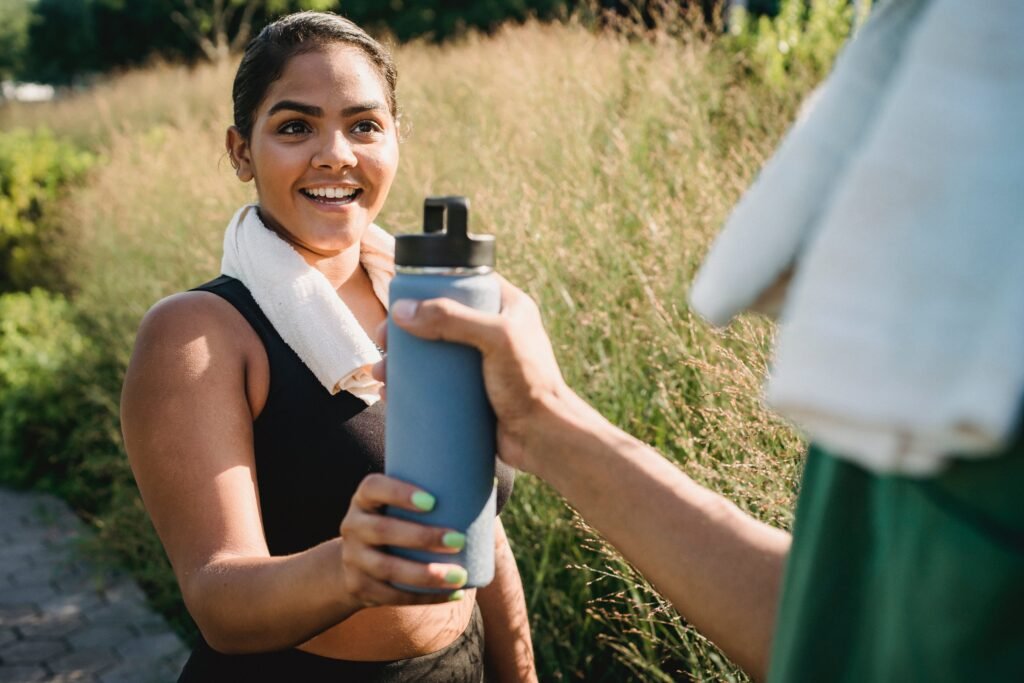So you’ve signed up for a marathon, and now it’s time to start thinking about how you’re going to stay hydrated throughout the race. As any seasoned runner knows, proper hydration is key to performing your best and avoiding dehydration. In this article, we will explore some effective hydration strategies specifically designed for marathon runners. Whether you’re a beginner or a seasoned pro, these tips will help you stay hydrated and cross that finish line with confidence.

This image is property of images.pexels.com.
The Importance of Hydration
Understanding Hydration
When it comes to marathon running, hydration is of utmost importance. Proper hydration is essential for maintaining your overall performance, preventing fatigue, and avoiding potential health risks. Understanding the basics of hydration can significantly improve your endurance and optimize your race day experience.
Hydration refers to the process of replacing lost fluids in your body. During exercise, especially intense and prolonged activities like marathon running, your body loses water through sweat. This loss of fluids can lead to dehydration if not adequately replenished. Dehydration can negatively impact your performance, as it affects your cardiovascular system, body temperature regulation, and overall energy levels.
Effects of Dehydration on Performance
Dehydration can have detrimental effects on your running performance. As your body loses water through sweat, your blood volume decreases, which can impair nutrient flow to your muscles and organs. This can lead to muscle cramps, reduced endurance, and increased fatigue. Additionally, dehydration affects your body’s ability to regulate its temperature, putting you at a higher risk of heat-related illnesses such as heat exhaustion or heat stroke.
Hyponatremia: Overhydration Dangers
While dehydration is a well-known risk for marathon runners, it’s essential to understand the dangers of overhydration as well. Hyponatremia, also known as water intoxication, occurs when the balance of electrolytes, particularly sodium, in your body is diluted. This can happen when excessive fluid intake overwhelms your kidneys’ ability to excrete fluids. Hyponatremia can be life-threatening and is often caused by consuming excessive amounts of plain water without proper electrolyte replenishment.
Pre-Marathon Hydration
Hydrating in the Days Leading Up to the Race
Proper hydration should begin well before race day. In the days leading up to the marathon, it is crucial to focus on hydrating your body adequately. Start by increasing your fluid intake and drinking water regularly throughout the day. Aim to consume around 8-10 cups (64-80 ounces) of fluids daily. This will help ensure that your body is adequately hydrated before the race.
Monitoring Urine Color
A simple and effective way to monitor your hydration status is by paying attention to the color and volume of your urine. Clear or pale yellow urine is a good indicator that you are well-hydrated. On the other hand, dark yellow or amber-colored urine suggests dehydration. To maintain proper hydration levels, aim for light-colored urine throughout your training period and especially on race day.
Avoiding Excessive Alcohol and Caffeine Intake
Alcohol and caffeine act as diuretics, meaning they can increase your urine output and contribute to dehydration. To maintain optimal hydration levels, it is advisable to avoid excessive consumption of alcohol and caffeinated beverages leading up to the marathon. If you do choose to consume them, make sure to balance them with increased water intake to counteract their diuretic effects.

This image is property of images.pexels.com.
During the Race
Carrying Fluids vs. Relying on Aid Stations
One crucial decision marathon runners face is whether to carry their fluids or rely solely on aid stations for hydration during the race. Carrying fluids in a hydration pack or belt allows you to have easy access to fluids whenever you need them. This can be particularly advantageous if you have specific hydration preferences or to avoid the scramble at congested aid stations. However, carrying fluids may add extra weight and discomfort, so it’s important to find a balance that works best for you.
Timing Your Fluid Intake
Timing your fluid intake during the race is essential to maintain optimal hydration levels. Experts recommend drinking fluids according to your thirst and taking small, frequent sips rather than gulping down large amounts at once. It is vital to listen to your body and drink when you feel the need. Pay attention to the temperature and humidity conditions on race day, as they can impact your fluid requirements. Remember not to wait until you feel excessively thirsty, as this may indicate dehydration.
Types of Hydration Products
There is a wide range of hydration products available in the market, including sports drinks, gels, and electrolyte tablets. These products are designed to replenish electrolytes lost through sweat, providing a balance of fluids and essential nutrients. Experiment with different products during your training to find what works best for you in terms of taste, digestion, and overall performance. Opt for products that contain a mix of carbohydrates and electrolytes to fuel your muscles and maintain proper hydration levels.
Hydration Stations and Aid Stations
Strategies for Navigating Aid Stations
Aid stations are crucial points along the marathon course where runners can replenish their fluids and refuel with various snacks and drinks. Navigating aid stations efficiently can help you save time and energy during the race. Familiarize yourself with the location of aid stations on the course and plan ahead for a smooth transition. It may be helpful to slow down slightly before reaching the aid station to avoid any potential collisions. Decide in advance if you will be skipping or stopping at each aid station to adjust your pacing accordingly.
Choosing the Right Fluids
At aid stations, you’ll often find a variety of fluids available, such as water, sports drinks, and electrolyte solutions. Each runner has different preferences, so it’s important to know what works best for you. Consider the environmental conditions on race day when deciding which fluids to consume. On hot and humid days, sports drinks or electrolyte solutions may be more beneficial in replenishing both fluids and electrolytes. However, on cooler days, plain water may be sufficient.
Supplementing with Electrolytes
Electrolytes play a crucial role in maintaining your body’s fluid balance and supporting proper muscle function. Many runners opt to supplement their fluid intake with electrolyte tablets or capsules. These supplements can be consumed alongside water or sports drinks to ensure an adequate supply of electrolytes during the marathon. Experiment with different brands and flavors during your training to find the ones that work best for you in terms of taste and effectiveness.

This image is property of images.pexels.com.
Dealing with Weather Conditions
Hot and Humid Races
Running a marathon in hot and humid conditions presents additional challenges, particularly when it comes to hydration. In these conditions, your body loses fluids at a faster rate through sweat, making proper hydration even more critical. Increase your fluid intake during the days leading up to the race and consider adjusting your race pace to accommodate for the added strain on your body. Take advantage of aid stations, carry a handheld water bottle, or wear a hydration pack to ensure you have access to fluids throughout the race.
Cool and Wet Conditions
Cool and wet conditions may give the illusion that hydration is less crucial, but it is still important to maintain proper fluid intake. Your body’s sweat rate may be lower in cooler weather, but you are still losing fluids through respiration. Additionally, the cool temperatures can trick you into thinking you’re not thirsty, leading to inadequate hydration. Make sure to drink fluids regularly during the race, even if you don’t feel thirsty, to avoid dehydration and maintain optimal performance.
Post-Race Hydration
Rehydrating Immediately after the Finish Line
Once you cross the finish line, rehydrating your body should be a top priority. Your body has endured significant exertion and sweat loss during the marathon, so it’s essential to replenish lost fluids as soon as possible. Start by drinking water or a sports drink provided at the finish line. Aim to consume fluids gradually rather than chugging them down all at once.
Monitoring Hydration Levels in the Recovery Period
Recovery after a marathon is a crucial phase to aid in your body’s healing process. Monitoring your hydration levels during this period is just as important as maintaining proper hydration during the race. Continue to drink fluids regularly in the hours and days following the marathon to restore your body’s fluid balance. Pay attention to your urine color and volume, as well as any signs of dehydration such as fatigue, dizziness, or dark urine. Consulting a healthcare professional if you experience severe symptoms is advisable.

Hydration and Sodium Intake
The Role of Sodium in Hydration
Sodium, an electrolyte, plays a significant role in maintaining your body’s hydration levels. It helps retain fluid and balance electrolyte concentrations within your cells. During long-duration activities like a marathon, you can lose significant amounts of sodium through sweat. Proper sodium intake is crucial in preventing hyponatremia, as well as ensuring your body’s fluid balance and overall performance.
Balancing Sodium Intake during a Marathon
Balancing your sodium intake during a marathon is essential to avoid both hyponatremia and sodium depletion. Sports drinks and hydration products often contain sodium to help replace what you lose through sweating. Experiment with different sports drinks during your training to find the ones that provide an adequate balance of sodium without causing any digestive discomfort. Additionally, consult with a sports nutritionist or dietician to determine your individual sodium needs and develop a personalized hydration plan.
Hydration and Performance
Impact of Hydration on Running Performance
Maintaining proper hydration levels can significantly impact your running performance. Dehydration can lead to decreased aerobic capacity, increased heart rate, reduced muscle endurance, and impaired cognitive function. On the other hand, optimal hydration ensures proper nutrient delivery to your muscles, helps regulate your body temperature, and enhances your overall energy levels. Staying properly hydrated throughout your marathon training and on race day can maximize your performance potential.
Optimal Hydration Strategies for Performance Improvement
To enhance your performance, it is crucial to adopt optimal hydration strategies. Start by planning your fluid intake before, during, and after each training session to understand your individual hydration needs. Additionally, consider using sweat rate calculations to determine your fluid losses during exercise and adjust your hydration plan accordingly. Experiment with different hydration products, practice timing your fluid intake, and listen to your body’s thirst signals to ensure you’re staying optimally hydrated for improved performance.
Recognizing and Addressing Dehydration
Signs and Symptoms of Dehydration
Recognizing the signs and symptoms of dehydration is vital in addressing it promptly. Common signs of dehydration include increased thirst, dry mouth, fatigue, dizziness, decreased urine output, dark-colored urine, and muscle cramps. It’s essential to be mindful of these indicators during the marathon and take immediate action if you suspect dehydration. Ignoring the signs can lead to worsening symptoms and potentially jeopardize your health.
Rehydrating After Recognizing Dehydration
If you recognize signs of dehydration during the marathon, it’s crucial to take immediate steps to rehydrate. Slow down your pace, find the nearest aid station, and drink fluids to replenish your body’s lost fluids. Sports drinks or electrolyte solutions can help restore your body’s electrolyte balance and maintain proper hydration. However, if you experience severe symptoms or your condition does not improve, it’s important to seek medical attention.
Personalized Hydration Plans
Factors to Consider for Individual Hydration Plans
Developing a personalized hydration plan is essential to meet your specific needs as a marathon runner. Several factors come into play when creating this plan. Consider factors such as the climate conditions of your race, your sweat rate, your body’s sodium requirements, and any previous experiences with hydration during long-distance running. Additionally, consult with experts such as sports nutritionists, coaches, or trainers who can help you develop a customized hydration strategy tailored to your individual needs.
Working with Experts for Customized Strategies
Collaborating with experts is highly recommended when it comes to creating a personalized hydration plan. Sports nutritionists or dieticians can help analyze your body’s hydration needs, calculate your sweat rate, and advise on optimal fluid and nutrient intake strategies. Coaches or trainers specialized in marathon training can provide guidance on timing your fluid intake during workouts and races. Utilizing the expertise of professionals ensures that your hydration plan aligns with your goals, maximizes your performance potential, and minimizes the risk of dehydration or overhydration.






